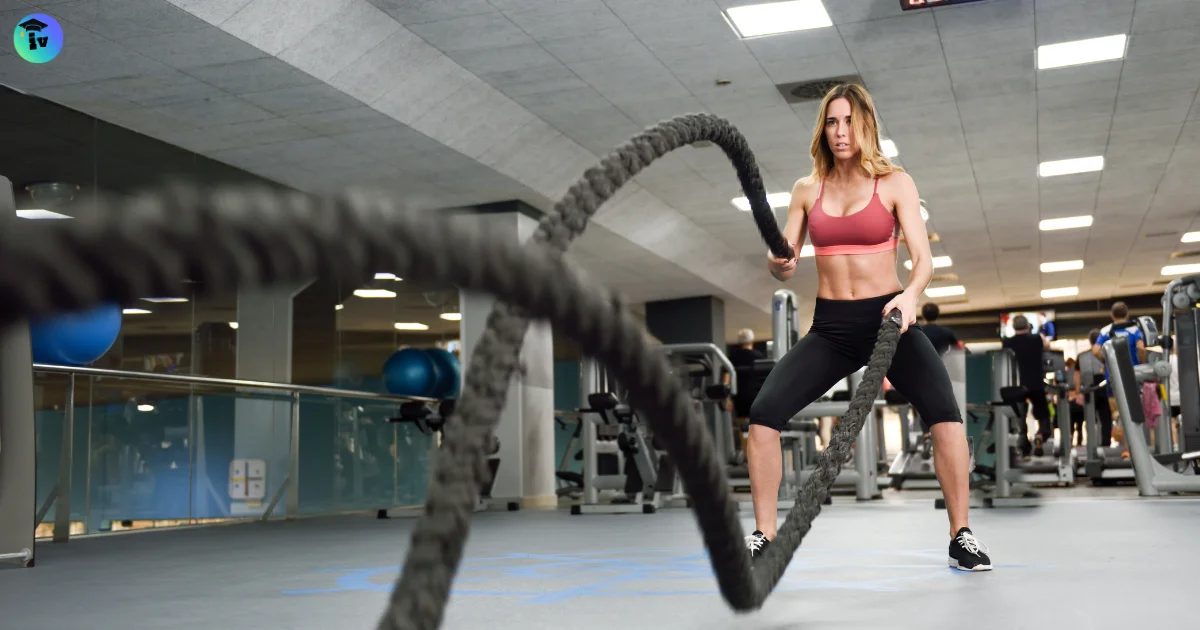Strict Presses CrossFit Perfect Form and Common Mistakes in 2024
Introduction
The strict press, also known as the shoulder or military press, is a fundamental exercise in CrossFit and weightlifting. It’s essential for building upper body strength and developing powerful shoulders. But, like many exercises, performing the strict press with improper form can lead to injury and hinder progress. In this article, we’ll dive into the perfect form for the strict press and highlight common mistakes to avoid in 2024.
Understanding the Strict Press
Definition and Benefits
The strict press is a compound movement that primarily targets the shoulders, but also engages the triceps, upper chest, and core. It involves pressing a barbell from the shoulders to overhead without using any leg drive. This makes it an excellent exercise for developing pure upper body strength.
Muscles Worked
The main muscles worked during a strict press include the deltoids, triceps, and upper pectoral muscles. Additionally, the core muscles are heavily engaged to maintain stability throughout the lift.
Equipment Needed
To perform a strict press, you’ll need a barbell and weights. A power rack or squat rack is also helpful for safely starting and ending the exercise.
Perfect Form for the Strict Press
Setting Up
Stance and Grip
Feet Position
Your feet should be shoulder-width apart, with your toes pointing slightly outward. This stable base helps you maintain balance during the press.
Hand Placement
Grip the bar just outside shoulder width. This allows for a more natural pressing motion and reduces strain on the shoulders.
Bar Position
Rack Position
The bar should rest on your shoulders, with your elbows slightly in front of the bar. This “rack” position ensures you’re in a strong starting position.
Wrist Alignment
Your wrists should be straight, not bent backward. This alignment prevents unnecessary stress on the wrists and helps transfer power efficiently from your body to the bar.
Executing the Strict Press
Starting Position
Engaging Core and Glutes
Before you start the press, tighten your core and squeeze your glutes. This engagement provides a solid foundation and prevents lower back strain.
Breathing Technique
Take a deep breath in and brace your core. Holding your breath momentarily increases intra-abdominal pressure, which helps stabilize your spine during the lift.
The Press
Bar Path
Press the bar straight up in a vertical line. Avoid letting the bar drift forward or backward, as this can throw off your balance and reduce efficiency.
Lockout Position
At the top of the press, fully extend your arms and lock out your elbows. Your biceps should be close to your ears, with the bar directly over your midline.
Lowering the Bar
Controlled Descent
Lower the bar slowly and under control. This eccentric phase is crucial for building strength and preventing injury.
Re-racking the Bar
Return the bar to the rack position by bringing your elbows slightly forward and bending your knees slightly if necessary. Ensure you re-rack the bar safely without dropping it.
Common Mistakes and How to Avoid Them
Incorrect Grip Width
Gripping the bar too wide or too narrow can lead to shoulder strain and reduce pressing power. Stick to a shoulder-width grip for optimal results.
Lack of Core Engagement
Failing to engage your core can lead to excessive lower back arching, increasing the risk of injury. Always tighten your core before starting the press.
Leaning Back
Leaning back excessively to press the bar can strain your lower back and reduce the effectiveness of the exercise. Keep your torso upright and engage your core.
Flaring Elbows
Letting your elbows flare out to the sides can put undue stress on your shoulder joints. Keep your elbows slightly in front of the bar throughout the lift.
Incomplete Lockout
Not fully extending your arms at the top of the press means you’re not getting the full benefit of the exercise. Make sure to lock out your elbows and finish each rep strong.

Tips for Improving Your Strict Press
Warm-Up and Mobility Exercises
Proper warm-up and mobility exercises can improve your range of motion and prevent injury. Focus on shoulder and thoracic spine mobility drills.
Strengthening Accessory Work
Incorporate accessory exercises like lateral raises, tricep dips, and core work to strengthen the muscles involved in the strict press.
Consistency and Progression
Regular practice and progressive overload are key to improving your strict press. Gradually increase the weight and volume over time.
Seeking Professional Guidance
If you’re struggling with form or progress, consider working with a coach or personal trainer. They can provide personalized feedback and help you refine your technique.
Warm-Up and Mobility Exercises
Dynamic Warm-Up
Before diving into your strict press workout, it’s crucial to perform a dynamic warm-up to increase blood flow and prepare your muscles for the exercise. Focus on movements that target the shoulders, upper back, and core. Arm circles, shoulder dislocations with a resistance band, and thoracic spine rotations are excellent choices.
Shoulder Mobility Drills
Improving shoulder mobility can significantly enhance your strict press form. Incorporate drills like wall slides, banded pull-parts, and overhead shoulder stretches. These exercises help increase your range of motion and ensure your joints are adequately prepared for the lift.
Strengthening Accessory Work
Lateral Raises
Lateral raises target the deltoid muscles, specifically the middle deltoids, which are essential for a strong and stable shoulder press. Perform 3-4 sets of 12-15 reps with moderate weight to build endurance and strength in your shoulders.
Tricep Dips
Strong triceps are crucial for locking out the bar at the top of the press. Tricep dips can be done on parallel bars or using a bench. Aim for 3-4 sets of 10-12 reps, focusing on a full range of motion and controlled movements.
Core Strengthening
A strong core is vital for maintaining stability during the strict press. Incorporate exercises like planks, Russian twists, and hanging leg raises into your routine. These exercises help build the core strength needed to support heavy overhead presses.
Consistency and Progression
Progressive Overload
Progressive overload is the key to improving your strict press. Gradually increase the weight you lift over time, ensuring that you can maintain proper form. Aim to add small increments of weight each week or every other week, depending on your progress and recovery.
Consistent Practice
Consistency is essential for mastering the strict press. Schedule regular practice sessions and stick to them. Consistent training helps reinforce good habits and allows you to track your progress effectively.
Seeking Professional Guidance
Working with a Coach
If you’re serious about improving your strict press, consider working with a coach or personal trainer. A professional can provide personalized feedback, identify any form issues, and create a tailored training plan to help you achieve your goals.
Video Analysis
If in-person coaching isn’t an option, consider using video analysis. Record your lifts and review them to identify any form discrepancies. Online coaching services can also offer valuable feedback through video submissions.
Advanced Tips for the Strict Press
Using a Belt
For those lifting heavy weights, using a weightlifting belt can provide additional support for your lower back and core. Ensure the belt is positioned correctly, just above your hips, and cinch it tightly enough to provide support without restricting your breathing.
Incorporating Variations
Adding variations of the strict press to your routine can help break through plateaus and improve overall strength. Consider including exercises like the seated strict press, Z-press (performed while sitting on the floor), and the single-arm dumbbell press to target different aspects of your shoulder strength and stability.
Advanced Techniques for the Strict Press
Utilizing Paused Reps
Paused reps involve holding the barbell at a specific point during the lift, typically just above the shoulders or at the lockout position, for a few seconds before completing the rep. This technique builds strength and stability in the pressing muscles and helps you become more comfortable with the weight at different points of the lift.

Incorporating Tempo Training
Tempo training involves controlling the speed of each phase of the lift. For the strict press, this could mean a slow eccentric (lowering) phase, a pause at the bottom, and an explosive concentric (pressing) phase. This method enhances muscle control, improves form, and increases time under tension, which can lead to greater strength gains.
Using Cluster Sets
Cluster sets are a way to accumulate more volume at a higher intensity without excessively fatiguing your muscles. For example, instead of doing 3 sets of 5 reps, you might do 5 sets of 3 reps with short rest periods in between (e.g., 20-30 seconds). This allows you to lift heavier weights for more total reps, promoting strength and muscle growth.
Nutrition and Recovery
Importance of Nutrition
Proper nutrition is vital for supporting your training and recovery. Ensure you consume enough protein to repair and build muscle, carbohydrates to fuel your workouts, and healthy fats to support overall health. Consider consulting a nutritionist for personalized advice.
Hydration
Staying hydrated is crucial for optimal performance. Dehydration can negatively impact your strength, endurance, and overall workout quality. Aim to drink plenty of water throughout the day and around your training sessions.
Rest and Recovery
Adequate rest is essential for muscle recovery and growth. Ensure you get enough sleep each night (7-9 hours) and include rest days in your training schedule. Overtraining can lead to injuries and hinder your progress, so listen to your body and allow it the time it needs to recover.
Tracking Your Progress
Keeping a Training Log
Keeping a detailed training log can help you track your progress and identify areas for improvement. Record your sets, reps, weights, and any notes on how the workout felt. This information can be invaluable for adjusting your training plan and setting new goals.
Setting SMART Goals
Set Specific, Measurable, Achievable, Relevant, and Time-bound (SMART) goals for your strict press. Having clear goals can keep you motivated and focused on your training. For example, aim to increase your strict press by 10 pounds over the next three months.
Regular Assessments
Periodically assess your progress by testing your one-rep max or seeing how many reps you can do at a given weight. These assessments can help you gauge your improvement and adjust your training program as needed.
Mental Strategies for Success
Visualization
Visualization involves mentally rehearsing the lift before you perform it. Picture yourself executing the perfect strict press with confidence and control. This mental practice can enhance your actual performance by reducing anxiety and increasing focus.

Positive Self-Talk
Encourage yourself with positive self-talk during your workouts. Replace negative thoughts with affirmations like “I am strong,” “I can do this,” or “I am improving every day.” Positive self-talk can boost your confidence and help you push through challenging sets.
Setting Mini Goals
Break your overall goal into smaller, more manageable mini-goals. For example, if your goal is to increase your strict press by 20 pounds, set mini goals to increase by 5 pounds every few weeks. Celebrating these small victories can keep you motivated and committed to your training.
Relevant Post
Achieve Your Fitness Goals Faster with EMOM CrossFit Workouts in 2024
Conclusion
Mastering the strict press requires dedication, consistent practice, and attention to detail. By focusing on proper form, avoiding common mistakes, and incorporating various training techniques and tips, you can significantly improve your strict press performance. Remember to prioritize nutrition, rest, and mental strategies to support your overall progress. Stay patient and committed, and you’ll see remarkable results in your CrossFit and strength training journey.




One thought on “Strict Presses CrossFit Perfect Form and Common Mistakes in 2024”